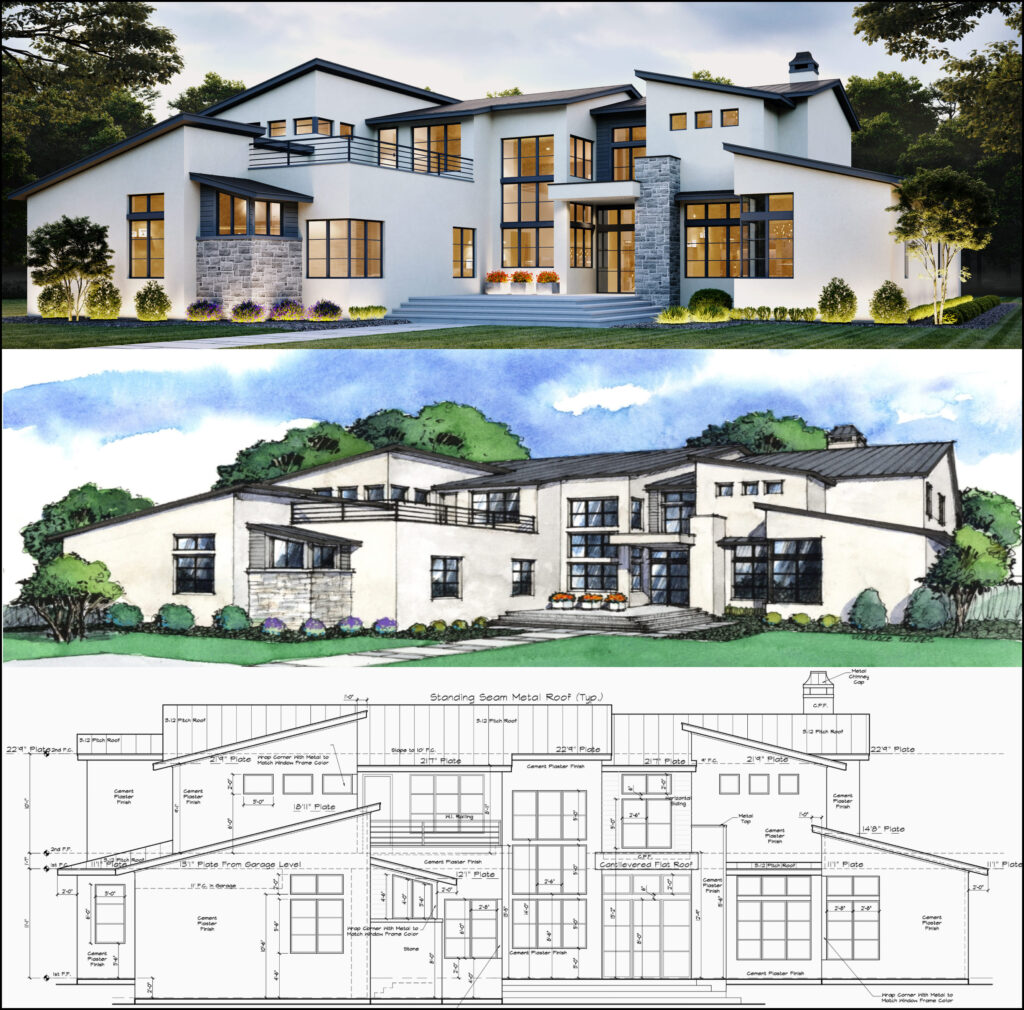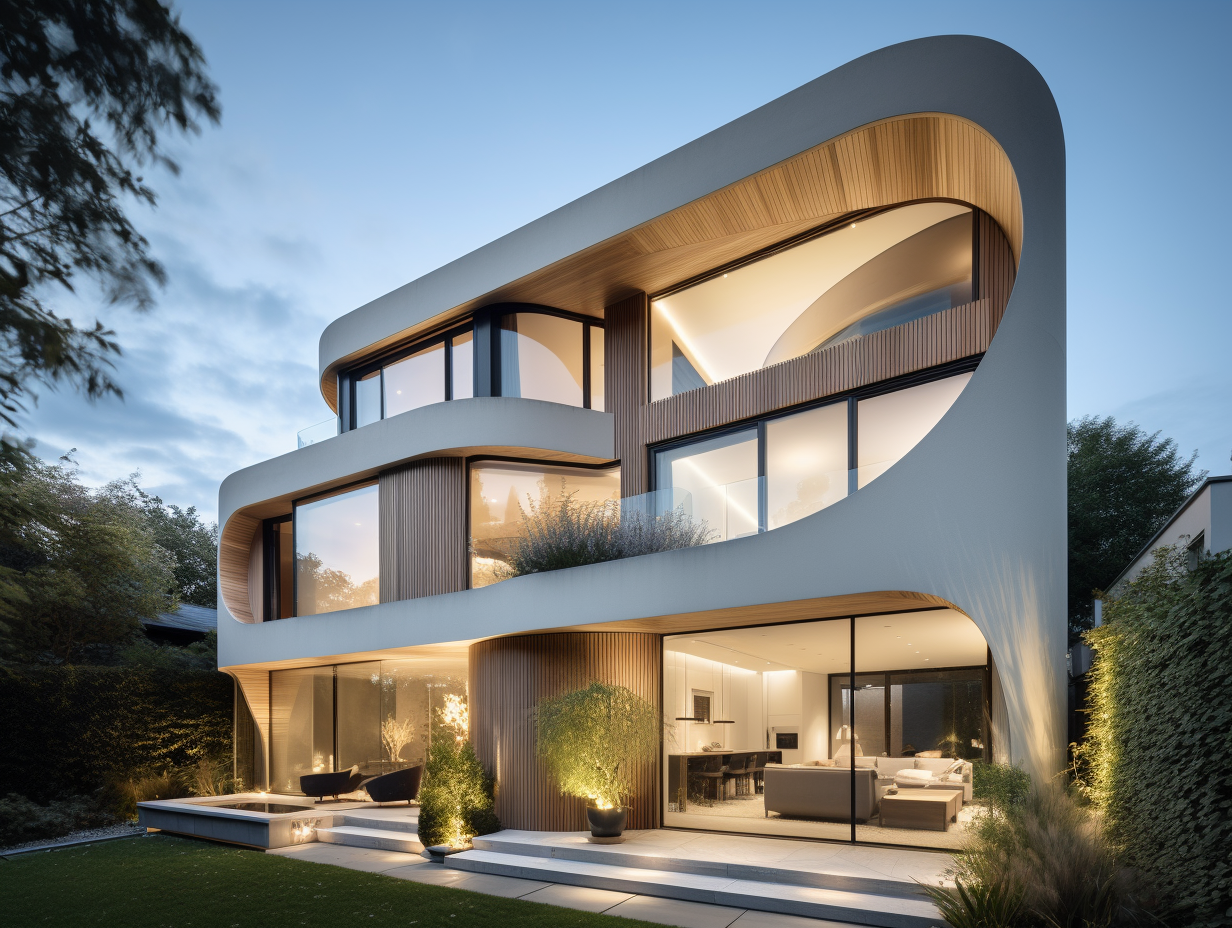Raise Your Building Style with the Experience of CDA Architects
Raise Your Building Style with the Experience of CDA Architects
Blog Article
The Crucial Role of a Designer fit Lasting Urban Settings for Future Generations
The duty of an architect in crafting sustainable city environments is progressively crucial in reacting to the difficulties of environment modification and urbanization. By effortlessly integrating environmental principles right into their designs, architects not just boost the aesthetic and useful top quality of metropolitan rooms yet also address pressing issues such as energy effectiveness and social equity. Their competence in innovative products and community engagement shapes developments that reverberate with neighborhood values and desires. As we check out the complexities of this field further, it comes to be evident that the future of city living might hinge on the actual techniques engineers use today.
Comprehending Sustainable Urban Style
Sustainable metropolitan design integrates ecological principles with city preparation to create atmospheres that are not just livable but also resistant. This approach emphasizes the importance of including natural systems right into the urban textile, ensuring that advancement fulfills the needs of the here and now without compromising the capability of future generations to satisfy their own needs. Crucial element of sustainable city design include efficient land use, the promo of biodiversity, and the integration of green spaces, all of which contribute to enhanced top quality of life for homeowners.
In addition, sustainable city layout prioritizes the reduction of the metropolitan heat island impact, enhanced air top quality, and efficient stormwater monitoring. It encourages using renewable energies and energy-efficient structure practices, which substantially reduced carbon impacts. Moreover, lasting urban design fosters social equity by producing easily accessible public spaces and promoting mixed-use developments that accommodate varied populations.
Through thoughtful planning and ingenious layout approaches, sustainable city settings can improve community resilience against climate adjustment while cultivating financial advancement. This all natural method not only addresses prompt urban obstacles yet likewise lays the groundwork for healthier, a lot more sustainable cities for generations ahead.
Secret Duties of Designers
Engineers play a critical role in forming lasting city atmospheres by translating design principles right into substantial frameworks and areas. Their responsibilities incorporate a wide variety of tasks that add to the total success of city layout tasks.
Primarily, designers perform complete site analyses to recognize the environmental, social, and cultural context of their tasks. This fundamental knowledge educates their style choices, ensuring that buildings integrate with their surroundings. They likewise take part in collective procedures with stakeholders, consisting of city organizers, engineers, and the community, promoting an inclusive strategy to city growth.
In addition, designers are entrusted with developing designs that maximize energy efficiency, resource preservation, and performance. They should stick to local zoning legislations, developing codes, and sustainability accreditations, making certain conformity while pressing the boundaries of technology.
In addition, architects are in charge of taking care of the layout procedure, collaborating with various experts throughout the building and construction phase to guarantee that the vision is realized accurately (cda architects). Ultimately, their function is not only concerning visual appeals; it has to do with creating resilient, adaptive areas that enhance the lifestyle for current and future generations, preparing for sustainable city living
Cutting-edge Materials and Techniques

Furthermore, developments in technology have actually brought about the growth of high-performance materials, such as protected concrete kinds (ICFs) and photovoltaic or pv glass, which add to power preservation and harness renewable resource. Methods such as passive solar layout and green roof coverings additionally exhibit how style can harmonize with natural systems, reducing dependence on man-made heating & cooling.
Moreover, the integration of clever materials, which adjust to environmental modifications, uses appealing methods for improving building performance. These products can react to temperature level fluctuations or dampness degrees, enhancing comfort and sustainability.
Ultimately, the calculated option and application of innovative materials and methods equip architects to develop metropolitan rooms that are not only practical and visually pleasing yet also durable and eco responsible, guaranteeing a lasting future for generations to find. cda architects.
Community Interaction and Partnership
The success of cutting-edge materials and methods in sustainable city architecture is significantly enhanced by active neighborhood involvement and cooperation. Designers need to recognize that the constructed environment profoundly influences the lives of neighborhood residents, making it vital to involve them in the design procedure. Involving the neighborhood fosters a sense of possession and you can find out more liability, guaranteeing that advancements not just fulfill aesthetic and practical needs yet also reflect the worths and aspirations of those who populate them.

Successful area involvement additionally helps in focusing on social equity within metropolitan development. By taking into consideration the voices of marginalized populaces, engineers can develop spaces that are comprehensive and fair. This way, community interaction and cooperation become indispensable to attaining genuinely sustainable urban atmospheres that offer the requirements of present and future generations.
Future Fads in Sustainable Architecture
An arising focus on adaptive reuse and round economy concepts is readied to redefine the landscape of sustainable architecture. As cities grapple with boosting populace densities and ecological difficulties, architects are increasingly transforming to approaches that enhance existing frameworks instead of seeking new builds. This strategy not only protects cultural heritage yet also dramatically reduces source intake and waste.
Additionally, advancements in modern technology are shaping future trends in sustainable page design. The assimilation of smart materials and structure systems enables real-time energy monitoring, boosting effectiveness and lowering carbon footprints. Developments such as environment-friendly roofs, living walls, and energy-generating exteriors are coming to be basic methods, better promoting ecological equilibrium within metropolitan settings.
Moreover, a change towards biophilic layout is gaining grip, emphasizing the link in between nature and human wellness. By including natural environments, engineers create areas that foster mental wellness while advertising biodiversity.
Conclusion
To conclude, engineers are critical in advancing lasting urban atmospheres with their experience in style, innovative materials, and area engagement. By prioritizing energy efficiency and source preservation, these professionals contribute to the development of durable urban spaces that satisfy the requirements of present and future generations. The assimilation our website of eco-friendly principles not only improves livability yet likewise promotes social equity, making sure advancements reverberate with the values and ambitions of the areas they offer.
Report this page